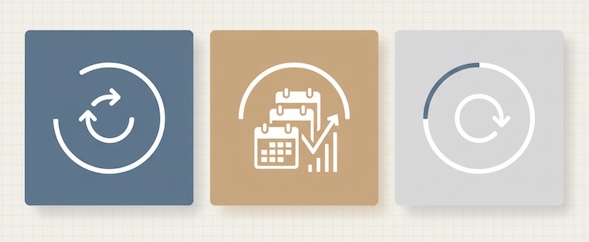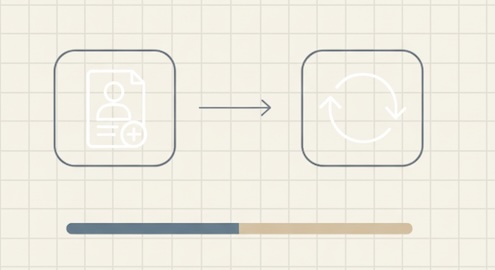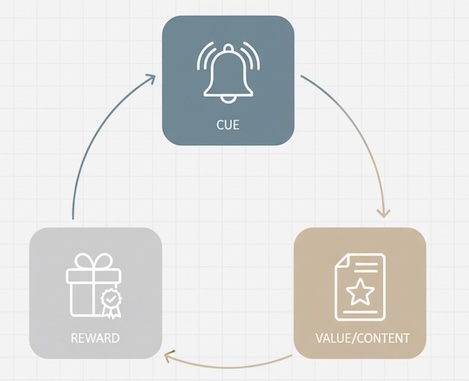Most websites obsess over getting more people in the door. Sensible—until growth stalls because yesterday’s visitors never come back. The split between new vs returning visitors is the simplest lens to see whether you’re building a durable audience or just fueling a leaky funnel. This article gives you a practical way to read that split, fix the leaky parts, and turn casual passers-by into loyal regulars.
Why this split matters
- Acquisition shows reach. New visitors reflect how effectively your channels introduce people to your brand.
- Returning shows trust. When people come back without paid nudges, you’ve earned a place in their routines.
- Compounding value. Returning visitors read more, convert faster, cost less to re-engage, and share more content. Loyalty isn’t a “nice to have”—it’s a margin protector.
Quick definitions (keep them consistent)
- New visitor: A browser/device with no prior visit in your lookback window (commonly 30–90 days).
- Returning visitor: A previously seen browser/device visiting again within that window.
- Returning Visitor Rate (RVR):
Returning Visitors ÷ Total Visitorsfor a time period. - Stickiness (DAU/WAU):
Daily Active Users ÷ Weekly Active Users—how often people come back within short cycles. - Cohort retention:
% of a given week’s new visitors who return in week 2, 3, 4…
Tip: Absolute numbers vary by niche; trendlines and peer comparisons are more useful than universal benchmarks.

Directional benchmarks (use as guardrails, not targets)
- News/communities: RVR 45–65%, DAU/WAU 40–55% (habits form quickly)
- B2B content/SaaS marketing sites: RVR 25–45%, DAU/WAU 15–30% (longer cycles)
- E-commerce stores: RVR 20–40% for content browsers; higher among account holders or loyalty members
If your RVR is <20% for a content-driven site, you likely have an activation problem; >60% with flat overall traffic suggests you may be under-investing in acquisition.
Diagnose with a simple matrix
Plot two axes: Acquisition (New) vs Loyalty (Returning)
- High New / Low Returning – “Leaky funnel.”
Symptoms: Big spikes from social/paid; few second visits.
Fix: Improve first-visit activation (clear next step, low-friction subscriptions, relevant internal links). - Low New / High Returning – “Cozy niche.”
Symptoms: Engaged regulars, slow top-line growth.
Fix: Expand reach—SEO gaps, partner swaps, UGC programs, targeted paid that mirrors what loyal readers love. - Low New / Low Returning – “Invisible.”
Symptoms: Little traffic, no habit.
Fix: Tighten positioning, sharpen value prop, focus on one channel until you win it. - High New / High Returning – “Moat.”
Guard it with consistent cadence, quality, and community rituals.

Turn first visits into second visits (the “activation” checklist)
Your goal for a first session is not a sale; it’s a reason to return.
- Clarity in the first 5 seconds: A headline that states who the site is for and why it matters.
- A single, obvious next step: “Get the weekly brief,” “Follow our deal alerts,” “Try the interactive calculator.”
- Internal discovery: Prominent related links, Next up modules, topic hubs.
- Lightweight capture: Email module mid-article or exit intent, without hard paywalls. Consider “send me this guide as a PDF” for value exchange.
- Micro-commitments: Save to favorites, follow a topic, set price alerts—low friction, high signal.
Measure: “Second Visit Rate” (SVR) = % of new visitors who return within 7 days. Improving SVR lifts long-term retention downstream.
Create the habit loop for returning visitors
Habits form around three parts: cue → value → reward.
- Cues you control: reliable publish cadence, weekly newsletters, release notes, new-arrivals roundups.
- Value that pays off quickly: skimmable summaries, clear “what changed” sections, price drop alerts, templates.
- Rewards that feel immediate: member-only guides, loyalty points, early access, community shout-outs.
Cadence guidance:
- News/retail: daily/weekly digests.
- B2B/SaaS: weekly or bi-weekly deep dives; monthly “what’s new” rollups.
- Communities: recurring rituals (Monday Q&A, Friday wins).

Content strategy by lifecycle
Map content to where the relationship is:
- For New Visitors (Discovery)
- Evergreen explainers, comparison guides, “start here” pages
- Social snippets that answer one job-to-be-done in 60 seconds
- Lightweight interactive tools (ROI calculator, fit-finder)
- For Returning Visitors (Engagement/Decision)
- Use-case stories, implementation checklists, customer highlights
- Release notes and “what’s new” feeds
- Community prompts: polls, challenges, AMAs
- For Loyal Visitors (Advocacy)
- Early access, beta programs, referral loops
- Advanced playbooks, niche benchmarks, behind-the-scenes posts
Measure loyalty with simple, durable metrics
- RVR (weekly & monthly): trend it; segment by channel and landing page.
- Stickiness (DAU/WAU, WAU/MAU): rising ratios imply habit formation.
- 7-day SVR: fast read on activation changes.
- Cohort retention: build weekly cohorts of first-timers and track week-over-week returns (W+1, W+4, W+8).
- Depth signals: repeat sessions per user, average pages per returning session, % who subscribe or sign in.
- Source quality: which website traffic channels deliver the highest SVR and retention (e.g., SEO vs. social vs. email).
Reporting tip: One executive view with three charts—RVR trend, cohort heatmap, and top landing pages by SVR—beats 20 vanity metrics.

What moves the needle (without overcomplication)
- Sharpen your “why return” promise. Put it in your header and in every subscription module.
- Reduce friction to follow. Fewer fields, social follow links, “save for later,” add-to-calendar for recurring events.
- Own a recurring format. “Tuesday Tactics,” “Friday Finds,” “Monthly Metrics.” Reliability builds habit.
- Close the loop. When you ship a fix or publish a requested topic, tell the audience that asked.
- Segment nudges. Send different roundups to first-timers vs. loyal readers; highlight what’s new since their last visit.
- Surface “return bait.” On every article/product page, show 2–3 genuinely related pieces—ideally based on behavior, not random popularity.
Common pitfalls to avoid
- Celebrating pageviews while loyalty stagnates. Volume without return is expensive reach.
- Counting “returning” too narrowly. If your window is 7 days but your category naturally cycles monthly, you’ll undercount loyalty.
- Hiding the subscription ask. If people must hunt for it, most won’t.
- Over-personalizing too soon. Creepy first-visit popups harm SVR. Earn relevance with content first.
- Obsessing over a “perfect” new-to-returning ratio. Healthy ranges differ by model; optimizing the trend and downstream value matters more.
Bottom line
Acquisition fills the top of the funnel; loyalty compounds the value. Read the new vs returning split as a relationship health check, use SVR, RVR, and cohort retention to see if you’re forming habits, and make every first visit obviously worth a second. When people return on purpose—because your site makes their life easier—you don’t just grow traffic. You grow a resilient audience that makes every channel work harder for less.

